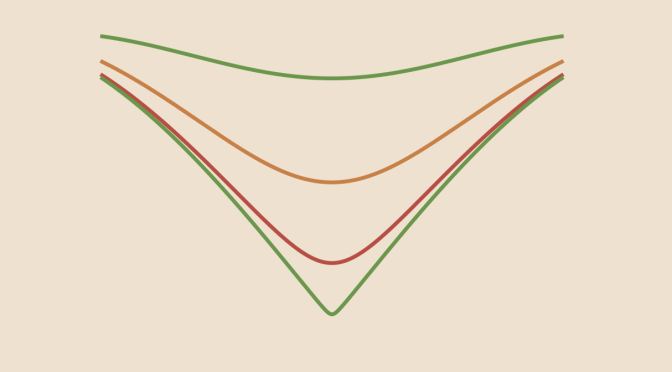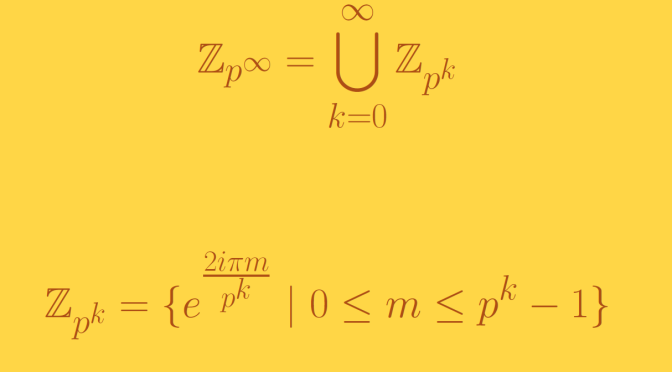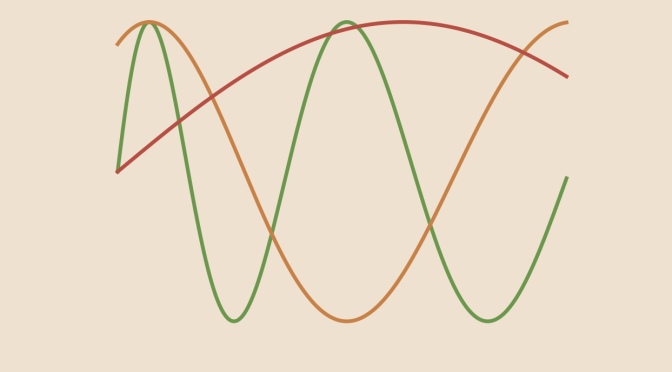Let’s recall Arzelà–Ascoli theorem:
Suppose that \(F\) is a Banach space and \(E\) a compact metric space. A subset \(\mathcal{H}\) of the Banach space \(\mathcal{C}_F(E)\) is relatively compact in the topology induced by the uniform norm if and only if it is equicontinuous and and for all \(x \in E\), the set \(\mathcal{H}(x)=\{f(x) \ | \ f \in \mathcal{H}\}\) is relatively compact.
We look here at what happens if we drop the requirement on space \(E\) to be compact and provide a counterexample where the conclusion of Arzelà–Ascoli theorem doesn’t hold anymore.
We take for \(E\) the real interval \([0,+\infty)\) and for all \(n \in \mathbb{N} \setminus \{0\}\) the real function
\[f_n(t)= \sin \sqrt{t+4 n^2 \pi^2}\] We prove that \((f_n)\) is equicontinuous, converges pointwise to \(0\) but is not relatively compact.
According to the mean value theorem, for all \(x,y \in \mathbb{R}\)
\[\vert \sin x – \sin y \vert \le \vert x – y \vert\] Hence for \(n \ge 1\) and \(x,y \in [0,+\infty)\)
\begin{align*}
\vert f_n(x)-f_n(y) \vert &\le \vert \sqrt{x+4 n^2 \pi^2} -\sqrt{y+4 n^2 \pi^2} \vert \\
&= \frac{\vert x – y \vert}{\sqrt{x+4 n^2 \pi^2} +\sqrt{y+4 n^2 \pi^2}} \\
&\le \frac{\vert x – y \vert}{4 \pi}
\end{align*} using multiplication by the conjugate.
Which enables to prove that \((f_n)\) is equicontinuous.
We also have for \(n \ge 1\) and \(x \in [0,+\infty)\)
\begin{align*}
\vert f_n(x) \vert &= \vert f_n(x) – f_n(0) \vert \le \vert \sqrt{x+4 n^2 \pi^2} -\sqrt{4 n^2 \pi^2} \vert \\
&= \frac{\vert x \vert}{\sqrt{x+4 n^2 \pi^2} +\sqrt{4 n^2 \pi^2}} \\
&\le \frac{\vert x \vert}{4 n \pi}
\end{align*}
Hence \((f_n)\) converges pointwise to \(0\) and for \(t \in [0,+\infty), \mathcal{H}(t)=\{f_n(t) \ | \ n \in \mathbb{N} \setminus \{0\}\}\) is relatively compact
Finally we prove that \(\mathcal{H}=\{f_n \ | \ n \in \mathbb{N} \setminus \{0\}\}\) is not relatively compact. While \((f_n)\) converges pointwise to \(0\), \((f_n)\) does not converge uniformly to \(f=0\). Actually for \(n \ge 1\) and \(t_n=\frac{\pi^2}{4} + 2n \pi^2\) we have
\[f_n(t_n)= \sin \sqrt{\frac{\pi^2}{4} + 2n \pi^2 +4 n^2 \pi^2}=\sin \sqrt{\left(\frac{\pi}{2} + 2 n \pi\right)^2}=1\] Consequently for all \(n \ge 1\) \(\Vert f_n – f \Vert_\infty \ge 1\). If \(\mathcal{H}\) was relatively compact, \((f_n)\) would have a convergent subsequence with \(f=0\) for limit. And that cannot be as for all \(n \ge 1\) \(\Vert f_n – f \Vert_\infty \ge 1\).



